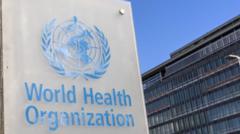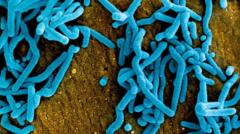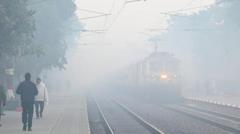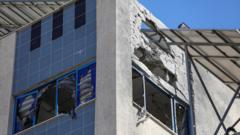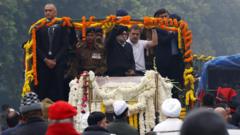Delhi's government has announced the closure of all primary schools due to alarming air pollution levels, which have reached hazardous conditions, prompting a shift to online education until the situation improves.
### Delhi Closes Primary Schools Amid Escalating Smog Crisis
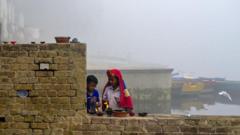
### Delhi Closes Primary Schools Amid Escalating Smog Crisis
**Authorities implement temporary online classes as air quality plunges to hazardous levels, affecting millions.**
The Chief Minister of Delhi, Atishi Marlena Singh, made the announcement on social media as the city grapples with severe smog that has engulfed the region. Fine particulate matter has exceeded safe thresholds dramatically, measuring over 50 times the World Health Organization's (WHO) recommended limits for air quality.
Delhi, along with surrounding areas, regularly suffers from extreme air pollution during the winter months, primarily caused by a combination of dropping temperatures, vehicle emissions, dust, and the burning of crop stubble. The latest reports from IQAir show that PM 2.5 particles have averaged 254 per cubic meter, well above the WHO’s acceptable level of 15.
The detrimental effects of this poor air quality are substantial, leading to respiratory and cardiovascular issues in residents. Studies indicate that a notable percentage of daily deaths in the capital is linked to fine particulate pollution. Furthermore, increased levels of PM 10 have also been recorded, signaling further health risks.
While experts anticipate a slight improvement in air quality over the coming days, the situation remains critical. To combat the pollution, the Delhi government has implemented measures including the suspension of non-essential construction activities and road spraying with dust suppressants. However, many critics assert that these initiatives have not yielded effective results against the pervasive smog.
Satellite images recently shared by NASA illustrate the vast expanse of the smog, which is severe enough to be spotted from outer space, affecting not only Delhi but stretching across northern India and into Pakistan. In a parallel situation, the city of Lahore has had to close its schools temporarily due to similar pollution concerns.
As the government grapples with this public health crisis, residents continue to endure the physical and mental strain of deteriorating air quality, urging for more decisive action.
Delhi, along with surrounding areas, regularly suffers from extreme air pollution during the winter months, primarily caused by a combination of dropping temperatures, vehicle emissions, dust, and the burning of crop stubble. The latest reports from IQAir show that PM 2.5 particles have averaged 254 per cubic meter, well above the WHO’s acceptable level of 15.
The detrimental effects of this poor air quality are substantial, leading to respiratory and cardiovascular issues in residents. Studies indicate that a notable percentage of daily deaths in the capital is linked to fine particulate pollution. Furthermore, increased levels of PM 10 have also been recorded, signaling further health risks.
While experts anticipate a slight improvement in air quality over the coming days, the situation remains critical. To combat the pollution, the Delhi government has implemented measures including the suspension of non-essential construction activities and road spraying with dust suppressants. However, many critics assert that these initiatives have not yielded effective results against the pervasive smog.
Satellite images recently shared by NASA illustrate the vast expanse of the smog, which is severe enough to be spotted from outer space, affecting not only Delhi but stretching across northern India and into Pakistan. In a parallel situation, the city of Lahore has had to close its schools temporarily due to similar pollution concerns.
As the government grapples with this public health crisis, residents continue to endure the physical and mental strain of deteriorating air quality, urging for more decisive action.



